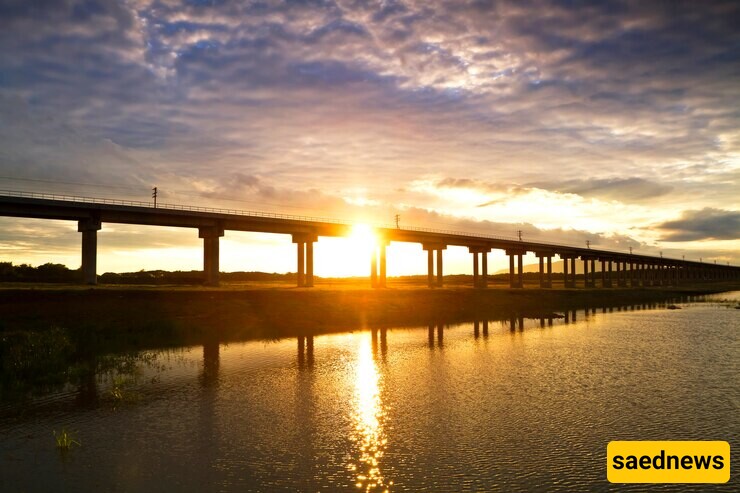SAEDNEWS: Iconic bridges like the Golden Gate, Tower Bridge, and Sydney Harbour Bridge are marvels of engineering and creativity. Discover the remarkable stories behind their construction and the innovation that turned these structures into global landmarks.

According to SAEDNEWS, bridges have long been symbols of connection and human ingenuity. They are not just feats of engineering but also cultural icons, representing the eras and societies that built them. From ancient stone arches to modern steel giants, the history of these structures reflects humanity’s ambition and resilience.

The Golden Gate Bridge, completed in 1937, was an audacious project. Spanning the 1.7-mile strait between San Francisco and Marin County, it faced strong tides, fog, and treacherous winds. Designed by Joseph Strauss, with contributions from Leon Moisseiff and Irving Morrow, the suspension bridge featured innovative cables created by spinning steel wires on-site. Its iconic red-orange color was chosen for visibility in foggy conditions and aesthetic appeal. The bridge became a symbol of perseverance during the Great Depression, connecting communities and solidifying San Francisco’s identity.

London’s Tower Bridge, completed in 1894, needed to balance functionality with aesthetics, blending with the nearby Tower of London. It had to allow ships to pass while serving as a road bridge for the growing city. Engineer Sir John Wolfe Barry and architect Horace Jones devised a bascule-and-suspension design. Hydraulic mechanisms powered by steam engines enabled the two bridge leaves to lift for river traffic. The Tower Bridge remains an iconic symbol of London, combining Victorian-era charm with practical utility.

The Sydney Harbour Bridge, completed in 1932, was designed to connect Sydney’s northern and southern shores. It required an ambitious steel arch design to span the wide harbor. Chief Engineer John Bradfield oversaw the project, inspired by New York’s Hell Gate Bridge. Over 52,000 tons of steel were used, and the arches were built outward from each shore before being joined in the middle. Known as the “Coathanger” for its shape, the bridge symbolizes Australian innovation and resilience during the Great Depression.

In 1883, the Brooklyn Bridge became the world’s first steel-wire suspension bridge, linking Manhattan and Brooklyn. Designed by John A. Roebling, the project was taken over by his son Washington Roebling after John’s death. Workers faced dangerous conditions, including caisson disease (decompression sickness). Emily Roebling, Washington’s wife, played a vital role in supervising the project during his illness. The bridge, with its iconic Gothic-style towers, represents 19th-century industrial ingenuity and remains a beloved symbol of New York City.

The Millau Viaduct, completed in 2004, is the tallest bridge in the world, soaring 1,125 feet above the Tarn River Valley in France. It was built to alleviate traffic congestion and connect the region more efficiently. Designed by architect Norman Foster and engineer Michel Virlogeux, the cable-stayed bridge features sleek, aerodynamic piers and a minimalist aesthetic. The viaduct combines cutting-edge engineering with environmental sensitivity, blending seamlessly with the surrounding landscape.

Spanning the Akashi Strait, the Akashi Kaikyō Bridge connects Kobe to Awaji Island. It replaced ferry services often disrupted by rough seas and was completed in 1998. At nearly 2.5 miles, it’s the world’s longest suspension bridge. Engineers accounted for the area’s seismic activity, designing it to withstand earthquakes and typhoons. The bridge exemplifies Japan’s commitment to innovative infrastructure and disaster resilience.
The world’s most iconic bridges are testaments to human creativity, perseverance, and progress. These engineering marvels continue to inspire, connecting not only places but also people and ideas, proving that with vision and determination, no gap is too wide to bridge.

